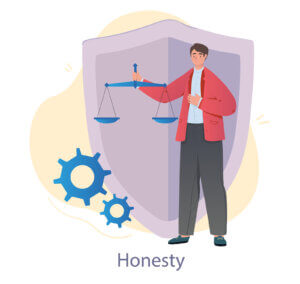Keep it simple, stupid
April 19, 2022

For the last couple of weeks, we’ve been settling into the reality that 2022 is going to bring a sea change for us as business leaders. Out of every crisis in history, moments of great reinvention and change were born.
Over the next several weeks, we’re going to examine some of the overarching themes of the emerging patterns and think through how we can anticipate and leverage these trends to our advantage as we work to continue to serve our clients and employees, grow our businesses, and set the stage for future opportunities.
Last week we dug into the need for urgency, but even more important, understanding what our consumer’s ultimate outcome was before we rushed to the wrong finish line. This week we’re going to focus on the hunger for simplification.
Just a reminder, the six shifts are:
- No time to wait.
- Simplification.
- Creating the blend.
- The inevitable cycle.
- Hunger for experience and connection.
- It’s all about me.
Of all six trends, this is the least startling, in my opinion. After the last two years of complexity, we crave simplicity. Fewer choices. Less noise. More definitive answers. We want direction and clarity. Our clients want us to help them curate their options, reduce the numbers of layers, hoops, and additional fluff, and – harking back to last week’s focus (no time to wait) – get it to us yesterday.
Building comparative charts or interactive tools on your site that help prospects narrow down to the perfect solution for their unique set of challenges will be welcomed. Training your salespeople to shift away from presenting all of the possibilities and instead asking better curating questions, so they can quickly reduce the options down to the best-fit choices would also be a wise move.
As consumers, we’ve had to get used to getting by with fewer and simpler choices. For many people, they discovered that this made life easier, they didn’t really miss out on anything, and they’re not ready to go back to having an overwhelming array of options.
Another way to look at the simplification need is that this is about hyper-specialization. Show me that you’re the right choice for me because you only serve other people who are a lot like me.
The subscription box phenomenon, which in fairness started before the pandemic, hit an all-time zenith during and after the lockdown. Prepackaged and pre-measured meals? Sign me up. Curated treats and toys for my heavy-chewing, “can rip through anything” dog? Sign me up. Three new outfits that show up every month in my exact size and curated based on my sense of style? Yes, please.
Wondering how this sentiment is being experienced by your own customers? This would be an excellent area to probe in a client survey or discussions with the top 20% of your customers. Learning what aspects of your business are the elements that they really care about will give you some clues as to where you could really double down on what you offer and where you should focus your simplification efforts.
This trend goes deeper than the need for fewer choices or ease of access, like the subscription model. At the heart of this shift is the fundamental acknowledgement that we’d rather pay a little more for something that is tailor-made for us and reduce the waste and churn of “not quite right” products and services.
This bodes well for specialists of all kinds. Find your tribe, learn as much as you can about exactly what they need and want, and help them create an affinity for both your brand and what your brand can do for them.
This was originally published in the Des Moines Business Record, as one of Drew’s weekly columns.
More








